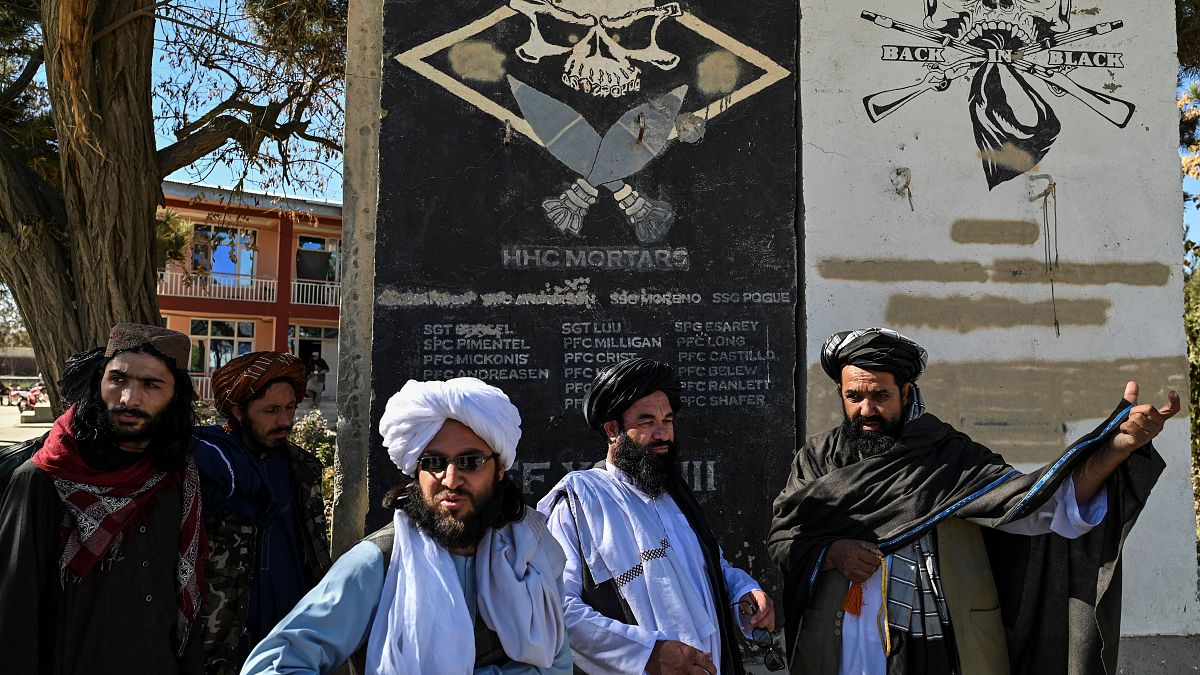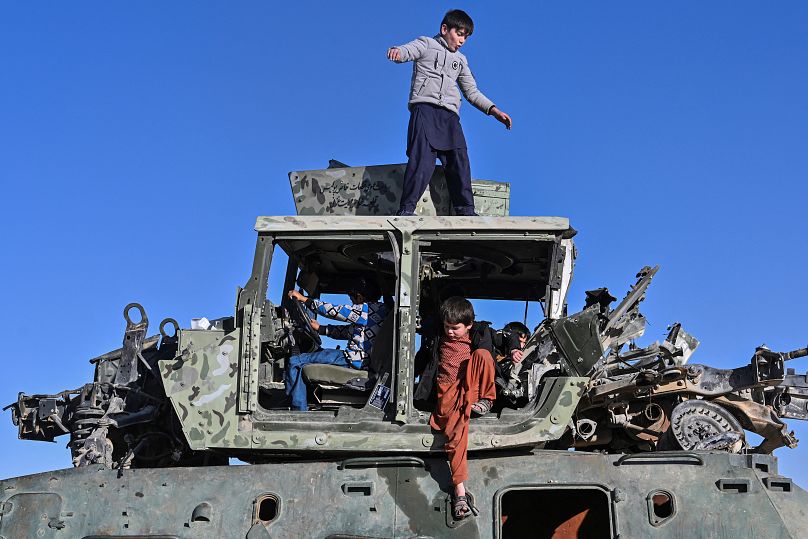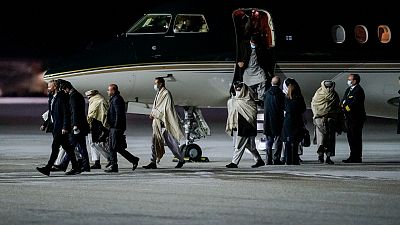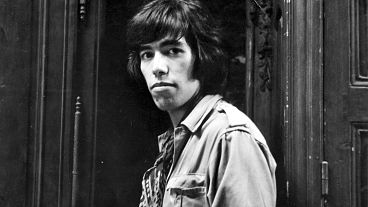An outdoor exhibit featuring destroyed US military hardware, vehicles and blast walls is on display in Ghazni, Afghanistan, as a reminder of the Taliban's return to power.
In the governor's compound of Afghanistan's Ghazni province, an informal Taliban exhibit stands: sections of blast walls from a former US military base and rusting hulks of destroyed American armoured vehicles.
One concrete slab is inscribed with the names and regiments of US troops who served in the province during America's longest war.
Like soldiers in countless wars throughout history, US troops regularly daubed their names on the walls of bases and fixed positions they occupied.
But now the towering block is on public display.
A symbol of triumph
Children clamber around and over the wreckage, which also features skeletons of abandoned Soviet tanks from the decade-long occupation of Afghanistan.
"We have to show this so that Afghans, the world, and future generations know that we beat the Americans," Taliban provincial culture chief Mullah Habibullah Mujahid told AFP.
"Our main purpose, our message to the world with this was that no one else must ever invade Afghanistan again," explains Mansoor Afghan, the provincial culture deputy.
But are these exhibits really signs of a victory against US forces? Certainly, the troop withdrawal paved the way for the Taliban to rise to victory, but against the Afghan military.
Speaking at the end of December, former president Ashraf Ghani blamed an agreement the United States had signed with the Taliban in 2020 for the eventual collapse of his government.
That agreement laid out conditions for the final withdrawal of the remaining U.S. and NATO forces, but also provided for the release of 5,000 Taliban prisoners, which Ghani said strengthened the insurgent force.
Taliban forces took the city of Ghazni - 150 kilometres (95 miles) south of Kabul - three days before the capital fell on August 15.
As part of the Doha Agreement, the US armed forces completed their withdrawal from Afghanistan on 30 August 2021 - after years of a disputed Western military commitment and counterinsurgency strategy.
The withdrawal marked the end of the 20-year war.
The US staged a chaotic series of airlift operations that evacuated more than 120,000 civilians but left thousands of others stranded.
The region has 3,500 years of rich recorded history, and the Taliban are now busy writing the latest chapter with proof of their military triumph.
The propaganda push comes as Afghanistan's new rulers struggle to evolve from an insurgency to a governing power in a country on the brink of economic collapse, with the UN estimating more than half the population is facing acute hunger.
Check out the video above to see the Taliban's public display




